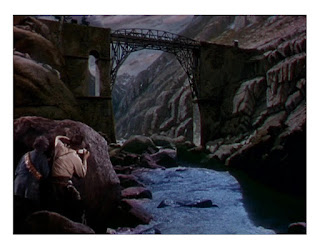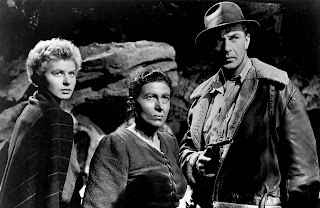This blog is based upon task of War Poetry.
for further information you can visit here

● Note down the difference of all the War Poets.
Wilfred Owen, Rupert Brooke, Wilfrid Wilson Gibson, Siegfried Sassoon, and Ivor Gurney were all poets who wrote about their experiences during World War I, but they each had distinct styles and perspectives that set them apart.
Wilfred Owen, known for his gritty and realistic portrayals of the horrors of war, focused on the harsh realities faced by soldiers on the front lines. His poems often conveyed the psychological and physical toll of warfare, offering a stark contrast to the romanticized notions of war prevalent at the time.
Rupert Brooke, on the other hand, embraced a more idealistic and patriotic tone in his early war poetry. His works, such as "The Soldier," expressed a sense of duty and the nobility of sacrificing one's life for the nation. Brooke's perspective was rooted in a romanticized vision of war as a noble and glorious endeavor.
Wilfrid Wilson Gibson's poetry often centered on the impact of war on ordinary soldiers and civilians. His verses explored the emotional toll and the human suffering caused by conflict, capturing the struggles of those left behind as well as those who fought on the front lines.
Siegfried Sassoon, a contemporary of Owen, shared a similar anti-war sentiment in his poetry. Sassoon, however, combined his opposition to the war with a deep empathy for the soldiers. His works critiqued the authorities and the senseless violence of war while also honoring the bravery and camaraderie of the soldiers.
Ivor Gurney, a less well-known poet, approached war poetry with a focus on the emotional and psychological impact of conflict. His works often reflected the internal struggles faced by soldiers, exploring themes of isolation, longing, and the dissonance between the wartime experience and the home front.
In summary, these war poets differed in their approaches to depicting war. Owen and Sassoon highlighted the grim realities and the futility of conflict, while Brooke initially embraced a more idealistic view. Gibson and Gurney, in their own ways, explored the emotional toll of war on both soldiers and civilians.
● Compare any two poems concerning the subject, style of writing, and patriotism.
Rupert Brooke's poem "The Soldier" talks about war in a kind of positive way. It sees a soldier's death as something noble and good for England. The language is beautiful and makes war sound like a heroic sacrifice for the country.
On the other hand, Wilfrid Wilson Gibson's poem "The Fear" shows a different side of war. It talks about how scary and tough it is for soldiers. The style is more direct and real, describing the fear and horror of being in a war. It's not about glorifying war but showing the difficult and frightening parts of it.
So, in essence, "The Soldier" is all about praising and glorifying war, portraying it as an honorable sacrifice for one's country. On the other hand, "The Fear" provides a contrasting perspective by highlighting the challenging and scary parts of war, aiming to depict a more genuine and unvarnished portrayal of the soldier's experience. Together, these two poems offer a glimpse into the diverse emotions and viewpoints surrounding the complex and turmoil period of World War I.
Subject: Rupert Brooke's poem "The Soldier" talks about war as something noble and great. It says that dying for your country is a good and honorable thing. On the other hand, Wilfrid Wilson Gibson's poem "The Fear" is about the scary and tough parts of war. It focuses on how soldiers feel afraid and the hard things they go through. Style of Writing: In "The Soldier," Rupert Brooke uses fancy and beautiful words to make war sound glorious. It's like a song praising the bravery of soldiers. In "The Fear," Wilfrid Wilson Gibson uses simpler and more direct language. He wants you to feel the real emotions of fear and trauma that soldiers go through in a war. Patriotism: "The Soldier" by Rupert Brooke is all about loving your country and thinking it's wonderful to die for it. It's a very positive view of patriotism. On the other side, "The Fear" by Wilfrid Wilson Gibson doesn't make war and patriotism seem glorious. It shows that war is tough, and the soldiers are scared. This gives a different, more real feeling about patriotism.
● Do you find any such regional poem/movies/web series/songs that can be compared to any one of the poems Also, give a proper explanation of the similarity.
"Paths of Glory" and "Dulce et Decorum Est" share a thematic resonance in their exploration of the brutal and dehumanizing nature of war, specifically World War I. Both the film and the poem offer a stark contrast to the glorified and romanticized notions of war prevalent during their respective times.
"Paths of Glory" (Film):

Directed by Stanley Kubrick, "Paths of Glory" is an anti-war film that focuses on the injustice and futility of military leadership during World War I. The movie tells the story of French soldiers who are court-martialed for refusing to continue a suicidal mission. The film exposes the callousness of commanders and the sacrifice of ordinary soldiers for the sake of perceived glory.
"Dulce et Decorum Est" (Poem by Wilfred Owen):
Wilfred Owen's poem "Dulce et Decorum Est" directly challenges the Latin saying "Dulce et Decorum est pro patria mori" (It is sweet and proper to die for one's country). The poem vividly describes the horrors of a gas attack, portraying the physical and psychological suffering of soldiers. Owen rejects the romanticized view of war, presenting a grim and realistic portrayal that exposes the falsehood of the glorification of war.
Both the film and the poem expose the harsh realities of war, emphasizing the disconnect between the high ideals of patriotism and the brutal truths faced by soldiers on the front lines. They highlight the sacrifice of ordinary soldiers who are often treated as expendable pawns by those in positions of authority. In "Paths of Glory," the focus is on the unjust treatment of soldiers by military commanders, while "Dulce et Decorum Est" delves into the firsthand experiences of soldiers subjected to the horrors of warfare, challenging the notion that dying for one's country is sweet and honorable.
In essence, both works contribute to the anti-war narrative by shedding light on the human cost and moral complexities associated with armed conflict. They serve as powerful critiques, urging the audience to reconsider idealized notions of war and sacrifice.
Thank you for Visiting.

















